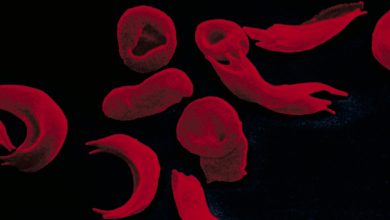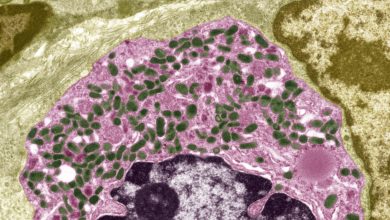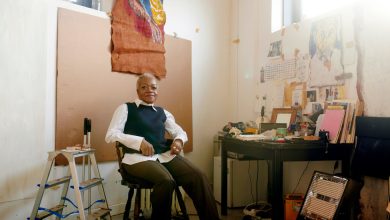Inside the High-Stakes Race to Test the Covid Tests

ATLANTA — When the pandemic hit two years ago, the United States faced an acute shortage of reliable Covid-19 tests. It was the nation’s first major pandemic failure, blinding health experts and the public to the spread of the coronavirus and allowing the pathogen to spread across the country unchecked. And for much of 2020, getting tested required waiting hours just to be swabbed and a week or longer for results.
Now, hundreds of millions of rapid, at-home tests are pouring into the American market every month. The federal government is mailing out free tests, Americans are trading swabbing tips on social media and children are spitting into collection tubes at school.
The flashiest developments in medicine typically involve treatments and cures, but the pandemic has been a case study in the importance of diagnostics. That is our first line of defense against disease: “Knowing early, knowing fast and doing something about it,” said Robert Nobles, vice president for research administration at Emory University.
Over the last two years, a group of researchers at Emory and other Atlanta institutions has played a key, but largely hidden, role in getting Covid tests into the hands of Americans,working with the National Institutes of Health and the Food and Drug Administration.
“We kind of functioned as their eyes and hands to answer the question, Do these tests work?” said Dr. Wilbur Lam, a pediatric hematologist and bioengineer at Emory and the Georgia Institute of Technology. “Essentially, we’re testing the tests.”
Dr. Lam and more than 200 colleagues — physicians, engineers, biochemists and more — have worked late nights and early mornings to accelerate the development of new tests and ensure that existing products can detect an alphabet of new variants, including Omicron.
The Atlanta team “has been absolutely heroic,” said Bruce Tromberg, director of the N.I.H.’s National Institute of Biomedical Imaging and Bioengineering.
Developing new tests, especially those designed to be used by the average consumer, is tricky, and the work that the Atlanta team has done illustrates how much meticulous research is required to get it right. The team’s work also provides a model that could help us be better prepared for future pandemics and usher in a new era of at-home diagnosis for all kinds of diseases.
“What we found through the pandemic, and have created out of the urgency, is a new mechanism for moving many of these technologies from what we like to describe as blackboard to bench top to bedside much more quickly,” Dr. Tromberg said.
The first tests
On a rainy February morning, Simeon Shelton, 15, sat in his mother’s car in a church parking lot in Atlanta, feeling congested and achy. He had arrived at the drive-through testing site for a standard P.C.R. test but grew intrigued when a researcher approached with a question: Would he like to help scientists evaluate a new Covid test?
Simeon was eager to help. So he sat in the passenger seat, with a nasal swab, a plastic test cartridge and a fluid-filled test tube all arranged on a tray on his lap. He read the instructions and carefully swirled the swab in each nostril. “I was just kind of nervous that I would mess it up,” he said moments later.
But the instructions had been easy to follow, he told the researcher standing outside his window, and in 15 minutes his results were in: negative.
The study, part of a coordinated federal effort to get more Covid tests on pharmacy shelves, would help the F.D.A. decide whether to authorize the product, which was already available abroad.
“The goal is to bring those tests into the American market,” Dr. Lam said. “But first, there’s a pit stop in Atlanta.”
Dr. Lam is slight and sprightly, with black-frame glasses and a youthful energy that fills every room he enters. When Dr. Lam was in graduate school, his son’s terrible ear infections spurred him and a colleague to invent a smartphone attachment that allowed parents to snap photos of their children’s eardrums — and doctors to diagnose infections remotely.
In 2018, Dr. Lam established a diagnostic research center with two other colleagues: Oliver Brand, an engineer at Georgia Tech, and Dr. Greg Martin, a pulmonologist and critical care doctor at Emory. The mission of the Atlanta Center for Microsystems Engineered Point-of-Care Technologies was to help companies, scientists and inventors develop high-tech diagnostic devices that could be used outside the laboratory.
The N.I.H.-funded center — a collaboration between Emory, Georgia Tech and Children’s Healthcare of Atlanta — had been open barely a year when Covid arrived. “We were, I think, uniquely suited then to try and help,” Dr. Lam said.
The N.I.H., which worked closely with the Atlanta researchers, thought so, too. So the agency enlisted the Atlanta center to play a key role in a new N.I.H. initiative, created in the spring of 2020: the Rapid Acceleration of Diagnostics program, or RADx, which was designed to help Covid test developers quickly refine, commercialize and scale up their products.
The applications poured in by the hundreds. “You’ve got all these people saying, ‘We have this great idea, give us money,’” said Dr. Tromberg, who leads the test-development arm of RADx. “How do you know if it’s really working?”
The Atlanta team was tasked with answering this question.
On a recent afternoon, the Emory virologists Leda Bassit and Anuradha Rao demonstrated the process in a quiet second-floor laboratory, where an assortment of at-home test strips and cartridges was arrayed on a lab bench. In the early days of the pandemic, the women had forged a fast friendship over many days spent in the Biosafety Level 3 laboratory, clad in personal protective equipment, growing live coronavirus and using it to test the tests. “We did a lot of work in the BSL-3,” Dr. Bassit said. “Spent hours and hours.”
But over the last two years, the team amassed tens of thousands of patient samples in the basement “freezer farm,” a small, windowless room that holds rows of frost-encrusted appliances, maintained at minus 80 degrees Celsius and named for characters from the Marvel universe or the television show “Schitt’s Creek.”
Now, the scientists often make highly concentrated viral slurries from patient samples pulled, in a blast of frigid air, from “Wolverine” or “David Rose.”
To assess the sensitivity of a single product, they test it with viral samples at a range of concentrations, using the same components that consumers would receive and following the same instructions.
Holding a nasal swab in one gloved hand and a pipette in the other, Dr. Bassit drew a bit of concentrated viral solution out of a tiny blue test tube and gently expelled it onto the swab. She twirled the swab in a tube containing liquid buffer, then added a thin test strip to the tube, nestling it beside the swab. Within minutes, two pink lines blazed across the strip: It was positive.
The scientists repeated this process over and over again, sometimes 75 or 80 times per product, photographing and logging each result. The most sensitive tests turned positive even when the virus was very dilute; less sensitive ones only detected the virus at the highest concentrations.
Beyond the lab bench
Products that performed well in the lab were evaluated at local Covid testing sites — like that rainy church parking lot — where people could volunteer to provide extra samples. “And we would test whatever test du jour,” Dr. Lam said.
Not all tests held up; some saliva tests, for instance, missed a lot of real-world infections.“They then pivoted to a nasal sample type, which worked beautifully,” said Julie Sullivan, chief operating officer for the Atlanta RADx efforts.
Researchers also assessed the user-friendliness of each product. “You want to make sure that nothing requires too much force, make sure that it’s easy to grasp, grip,” said Sarah Farmer, managing director of Georgia Tech’s HomeLab. “Let’s streamline it where possible, cut down steps where possible.”
Maxim Biomedical, a Maryland-based company that makes a rapid antigen test, added a test-tube stand after researchers noticed that users could not set the liquid-filled, round-bottomed tube down on a table. “Their data played a big part in our development and optimization of the test,” said Jonathan Maa, the company’s chief operating officer. (The company hopes to use what it learned to design other consumer-friendly tests, he said.)
To identify tests that could be scaled up quickly, the researchers also rated the “technology readiness” of each test. Some otherwise promising breath-based devices performed poorly on this measure. “When we looked at them, they really were not mature enough to succeed,” Dr. Martin said.
They also took each test apart to look for potential manufacturing problems. Some products seemed slapdash, with pieces glued together, while others were too complex to be produced by the millions. “We saw tests that tried to shrink the whole lab, basically, in a very, very small form factor,” Dr. Brand said. “From an engineering point of view, amazing.” But, he added, “you cannot do that on scale.”
Companies often adjusted their products in response to the scientists’ reports. The Atlanta team frequently “gave the key feedback to the companies that allowed them to change their platforms and make them really successful,” Dr. Tromberg said.
By late 2020, several tests that had survived the Atlanta gauntlet had been authorized by the F.D.A., including the first at-home, over-the-counter Covid test, made by the Australian company Ellume.
“We thought we were done,” Dr. Lam said. Then the Alpha variant took off: “We had to restart.”
Variant vetting
Covid tests look for small pieces of the virus. Antigen tests, for instance, typically contain antibodies that bind to proteins, or antigens, on the virus’s surface.
But mutations in the virus can change the shape of these proteins, making it harder for the antibodies to bind and generating false negatives.So in January 2021, the Atlanta researchers began working with the N.I.H. and F.D.A. to test dozens of authorized products against new variants. “At one point, we were testing 11 different variants,” Dr. Rao said. “Everyone was working all the time.”
Laboratory experiments initially raised concerns about the sensitivity of some antigen tests for Omicron, but the tests appear to be performing better in the real world than they did in the lab, Dr. Lam said.
The scientists are ready to repeat the process should a new variant pose a concern. “Like the National Guard,” Dr. Lam said. “They’re on reserve.”
Since the fall, when the Biden administration announced plans to make at-home tests more accessible, the researchers have also been helping to speed F.D.A. authorization of products that can be produced in volume, including tests from Siemens and SD Biosensor.
This work has been “crucial” said Dr. Michael Mina, a former Harvard epidemiologist who is now the chief science officer for eMed, which sells at-home tests. Typically, the onus is on test developers to collect their own data and navigate the regulatory process.
But the Atlanta scientists and the federal government have created a better, more nimble model, he said — a systematic way for an independent party to vet products, ensuring their quality, and fast-track the approval of those that pass muster, getting them into consumers’ hands faster. “It sets a new approach that the U.S. could take in the evaluation of diagnostic tools,”Dr. Mina said.
RADx has supported 29 manufacturers that have received 40 F.D.A. authorizations for Covid tests, including seven over-the-counter products, all of which have been evaluated by the Atlanta team.
“Without a doubt the RADx program has accelerated the category of at-home diagnostics,” Dr. Sean Parsons, chief executive of Ellume, said in an email. “It has pushed innovation and development forward by years.”
The next tests
The Atlanta scientists have also tackled basic research questions, such as whether children can reliably swab themselves (they can) and whether people should swab their throats instead of their noses (they should not).
Some biochemists on the team are now forecasting the future. They developed a method for programming human cells to churn out viral antigens with every possible mutation. Each cell displays one version of this antigen, with one particular mutation, on its surface.
Then, researchers can add one of the antibodies used in commercial tests to this collection of cells, along with a fluorescent marker that attaches to the antibody. The cells that give off the weakest fluorescent signals have not bound tightly to the antibody — indicating that they have mutations that will render the virus harder to detect with Covid tests that employ that antibody.
“We can do binding experiments on all variants simultaneously,” said the Emory biochemist Eric Ortlund, brandishing a color-coded chart of how each possible mutation in one gene might affect the performance of a test that uses a given antibody. “They now have a map that will predict the impact of any mutation that may arise in the future.”
The approach — which the team hopes to apply to other viruses, including influenza — could also help companies design more robust tests from the outset, selecting antibodies that are less likely to be rendered useless by a few small mutations.
Some test manufacturers are already expanding their offerings; Ellume and Quidel, among others, have received N.I.H. funding to add flu detection to their antigen tests.
And some of the technologies that didn’t make it to market, such as breath-based diagnostics, received feedback and investment that could speed their development, the Atlanta investigators said. “They might have now a head start for the next pandemic,” Dr. Brand said.
Or, as Dr. Lam put it, “Think about all the things that came out of NASA trying to get to the moon.”





